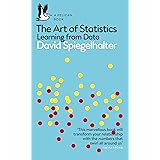How to Use the Multinomial Distribution in R?
Multinomial Distribution in R, when each result has a given probability of occurring, the multinomial distribution describes the likelihood of obtaining a specific number of counts for k different outcomes.
A statistical experiment with n repeated trials is known as a multinomial experiment. There are a finite number of possible outcomes in each trial. The likelihood of a particular outcome occurring on any given trial remains constant.
If a random variable X has a multinomial distribution, the probability that outcome 1 will occur exactly x1 times, outcome 2 will occur exactly x2 times, and so on can be calculated using the formula:
Probability = n! * (p1x1 * p2x2 * … * pkxk) / (x1! * x2! … * xk!)
where:
n: total number of events
x1: the number of times the first outcome happens
p1: In a given trial, what are the probability that outcome 1 will occur?
In R, we may use the dmultinom() function to calculate a multinomial probability, which has the following syntax.
dmultinom(x=c(1, 6, 8), prob=c(0.4, 0.5, 0.1))
where:
x: The frequency of each outcome is represented by a vector.
prob: The probability of each outcome is represented by a vector (the sum must be 1)
The examples below demonstrate how to utilize this function in practice.
Example 1:
Candidate A receives 20% of the vote, Candidate B receives 30% of the vote, and Candidate C earns 50% of the vote in a three-way election for mayor.
What is the probability that 5 voters voted for candidate A, 5 for candidate B, and 3 for candidate C in a random sample of ten voters?
To address this question, we can use the R code below:
make a multinomial probability calculation
dmultinom(x=c(5, 5, 3), prob=c(0.2, 0.3, 0.5))
[1] 0.007005398
The probability that exactly 5 people voted for A, 5 voted for B, and 3 voted for C is 0.007.
Example 2
Assume there are six yellow balls, two red balls, and two pink balls in an urn.
What is the probability that all four balls in the urn are yellow if we pick four balls at random from the urn and replace them?
To address this question, we can use the R code below:
Multinomial Probability Calculator
dmultinom(x=c(4, 0, 0), prob=c(0.6, 0.2, 0.2))
[1] 0.1296
The chance of all four balls being yellow is 0.1296.
Example 3
Assume two boys are playing cards against one another. Student A has a 0.6 chance of winning a game, Student B has a 0.3 chance of winning a game, and they have a 0.1 chance of tying in a game.
What is the probability that player A will win 5 times, player B will win 4 times, and they will tie one time if they play ten games?
To address this question, we can use the R code below:
make a multinomial probability calculation
dmultinom(x=c(5, 4, 1), prob=c(0.6, 0.3, 0.1))
[1] 0.07936186
About 0.08 percent of the time, player A wins 5 times, player B wins 4 times, and they tie 1 time.
Can’t rename columns that don’t exist – Data Science Tutorial
Example 4
A series of matches are played by three card players. Player A has a 20% chance of winning any game, player B has a 30% chance of winning, and player C has a 50% chance of winning.
What is the probability that player A will win one game, player B will win two games, and player C will win three games if they play six games?
Given:
n = 12 people (6 games total)
n1=1 (Player A wins)
n2 =2 (Player B wins)
n3 = 3 (Player C wins)
P1 = 0.20 (probability that Player A wins)
P2 = 0.30 (probability that Player B wins)
P3 = 0.50 (probability that Player C wins)

dmultinom(x=c(1, 2, 3), prob=c(0.20, 0.30, 0.50)) 0.135





Ndewo, achọrọ m ịmara ọnụahịa gị.
Now retrieving an image set.
The Art of Statistics
₹437.00 (as of July 3 23:00 GMT +07:00 - More infoProduct prices and availability are accurate as of the date/time indicated and are subject to change. Any price and availability information displayed on [relevant Amazon Site(s), as applicable] at the time of purchase will apply to the purchase of this product.)
Hello.
Now retrieving an image set.
The Art of Statistics
₹437.00 (as of July 3 23:00 GMT +07:00 - More infoProduct prices and availability are accurate as of the date/time indicated and are subject to change. Any price and availability information displayed on [relevant Amazon Site(s), as applicable] at the time of purchase will apply to the purchase of this product.)
thanks, interesting read
Now retrieving an image set.
The Art of Statistics
₹437.00 (as of July 3 23:00 GMT +07:00 - More infoProduct prices and availability are accurate as of the date/time indicated and are subject to change. Any price and availability information displayed on [relevant Amazon Site(s), as applicable] at the time of purchase will apply to the purchase of this product.)
fantastic issues altogether, you simply received a
new reader. What could you recommend about your put up that you made some days in the past?
Any positive?
Now retrieving an image set.
The Art of Statistics
₹437.00 (as of July 3 23:00 GMT +07:00 - More infoProduct prices and availability are accurate as of the date/time indicated and are subject to change. Any price and availability information displayed on [relevant Amazon Site(s), as applicable] at the time of purchase will apply to the purchase of this product.)
Pretty! This has been a really wonderful post. Thank you for providing this
info.
Now retrieving an image set.
The Art of Statistics
₹437.00 (as of July 3 23:00 GMT +07:00 - More infoProduct prices and availability are accurate as of the date/time indicated and are subject to change. Any price and availability information displayed on [relevant Amazon Site(s), as applicable] at the time of purchase will apply to the purchase of this product.)